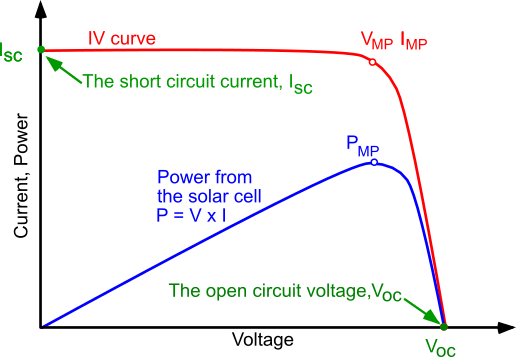Voltage for solar is generally about 0.6VDC per cell.
There is what’s called an IV curve for solar modules which is inverse log of current and voltage. Plotted on that scale you have Voc, Vmp, Isc, and Imp.
Voc = Voltage open circuit
Vmp = Voltage max power
Isc = Current, short circuit
Imp = Current, max
Now, most devices cannot handle such large variations in voltage and/or current which is where the solar controller or MPPT comes into play. If you plugged a solar module directly into a battery or other electronics you’d likely start a fire. Your solar controller is essentially a variable dc to dc converter. Find the range it can handle on the solar end, match it to whatever system you need it to power and you have just completed your system design.
I didn’t cover the most important part. Pick the size of system you want first. That is, how much do you want to power from the inverter and/or your solar set up?
In my case, I want to power about 3kW. I found a couple really cool 3.5kW inverters. Both of the ones I’m looking at are called inverter charge controllers. That is, they are inverters, chargers and solar controllers all in one. I am deciding to start with one 48VDC 50Ah LiFePO4, maybe slightly bigger depending on price. I chose 48VDC because pushing 3.5kW out of a 12VDC battery is ludicrous, a waste of copper, and a potential fire hazard.
Always go with the higher voltage ratings, you can push less current and use thinner gauge wires. I will be increasing my battery bank because I plan to charge it while driving, will be more mobile, and solar modules are bulky, awkward, fragile, expensive, and I won’t be at my trailer all day moving an entire 5kW array to track the sun every minute. I won’t always be in a spot facing the sun, and wont have some crazy device sitting on my roof flapping in the wind while I travel 65 on the highway.
Yes, there is a big difference between the 200 - 400W rating of the module and the actual power you’ll be receiving when conditions are slightly less than perfectly ideal. 70 - 80 % is generous for “ideal.” If you don’t have solar trackers you’d be lucky to see that rate for a couple hours a day.
If your question is anything to do with voltage and current, take a step back and rethink your design before messing with and installing solar on your rig. It’s cool sure, I have one module as a backup, and don’t plan to invest heavily in it for my system. I should mention I work in commercial, industrial and utility scale solar as a Field O&M Technician.
Solar takes up a lot of space and only works if it’s pointed at the sun. This kind of contradicts the whole idea of mobile, not saying it doesn’t have its benefits.


